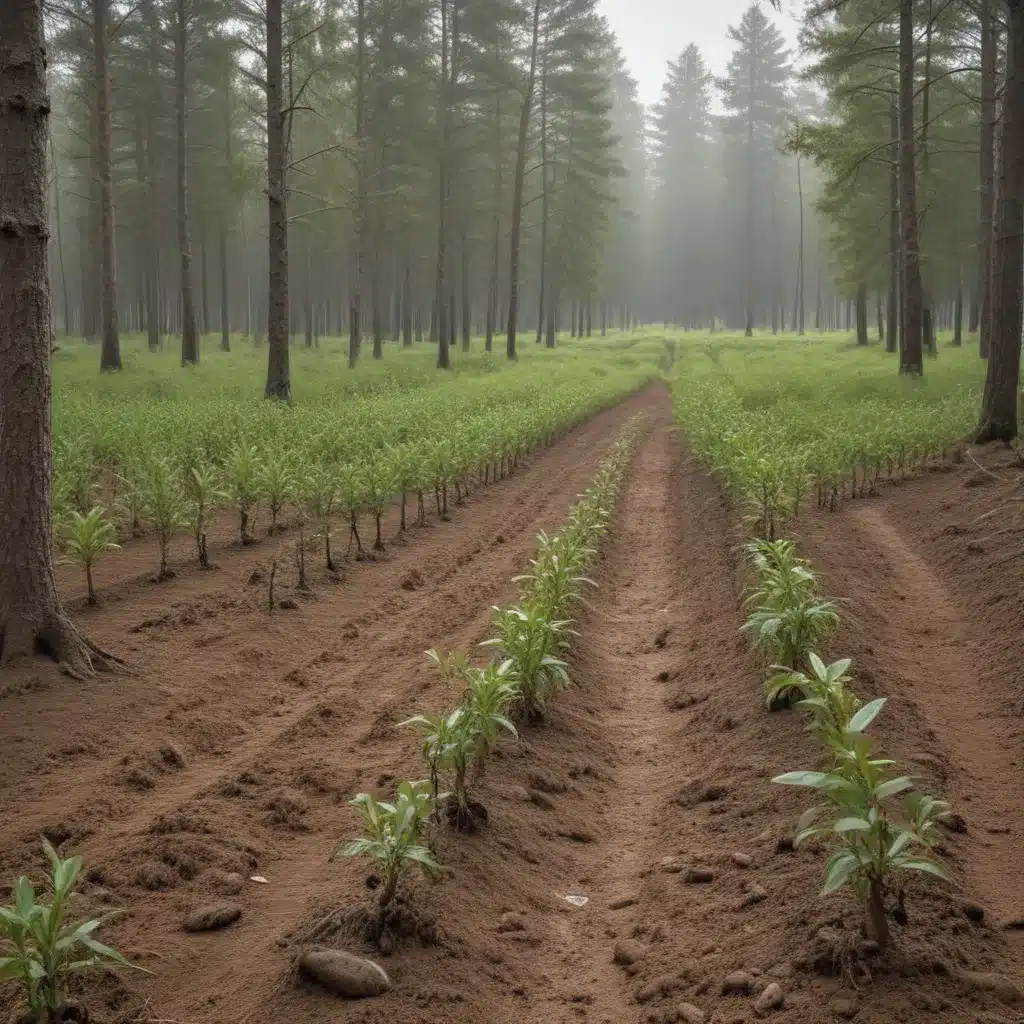In the rapidly evolving world of sustainable forestry, technological innovations are transforming the way we manage our woodlands and timber resources. One such breakthrough is the integration of soil moisture sensors into forestry operations, offering a wealth of benefits for precision irrigation, environmental monitoring, and optimized resource utilization.
Soil Moisture Sensor Technology
At the heart of this transformation are advanced soil moisture sensors, designed to provide real-time, highly accurate data on the water content within the soil. These sophisticated devices leverage various technologies, including capacitance, resistance, and time-domain reflectometry, to measure the dielectric constant of the soil and translate it into precise moisture levels.
By deploying a network of these sensors throughout the forest, forestry professionals can create a comprehensive moisture map of the land, gaining unprecedented insights into the specific needs of different tree species and soil conditions. This granular data empowers them to make informed decisions about irrigation, water management, and overall forestry operations.
Precision Forestry and Irrigation Management
The integration of soil moisture sensors into forestry operations aligns perfectly with the growing emphasis on precision forestry practices. Precision forestry is an approach that leverages data-driven insights to optimize resource allocation, enhance productivity, and minimize environmental impact. At the forefront of this revolution is the use of soil moisture sensors to facilitate precision irrigation.
Conventional forestry irrigation often relies on generalized schedules or subjective observations, leading to inefficient water usage and potential stress on tree health. However, with the integration of soil moisture sensors, forestry professionals can precisely monitor the water needs of individual stands or even individual trees, adjusting irrigation accordingly.
This targeted approach to irrigation not only reduces water waste but also promotes the overall health and resilience of the forest ecosystem. By ensuring that each tree receives the optimal amount of water, forestry operations can enhance timber quality, boost growth rates, and support the long-term sustainability of the woodland.
Environmental Monitoring and Resource Optimization
Beyond the benefits of precision irrigation, soil moisture sensors also play a crucial role in environmental monitoring and resource optimization within forestry operations. By continuously tracking soil moisture levels, these sensors can provide early warning signs of potential stresses, such as drought, waterlogging, or pest infestations.
This real-time data enables forestry professionals to respond proactively, implementing targeted mitigation strategies to protect the forest’s ecological balance. Soil moisture monitoring can also inform decisions about forest regeneration, site selection for new plantings, and the selection of drought-tolerant tree species.
Moreover, the integration of soil moisture sensors supports the broader goal of sustainable forestry practices. By optimizing water usage, reducing waste, and enhancing overall resource efficiency, forestry operations can minimize their environmental footprint and contribute to the long-term preservation of our valuable woodland ecosystems.
Precision Irrigation Strategies
The effective integration of soil moisture sensors into forestry operations requires a holistic approach to precision irrigation management. This encompasses several key elements:
Water Resource Optimization
Soil moisture data allows forestry professionals to precisely determine the water needs of their forest stands, enabling them to allocate water resources in the most efficient manner. By avoiding over-irrigation or under-irrigation, they can significantly reduce water consumption while maintaining optimal tree health and growth.
Soil-Plant-Atmosphere Interactions
Soil moisture sensors provide insights into the complex interplay between the soil, the plants, and the surrounding atmosphere. Understanding these dynamic relationships is crucial for developing adaptive irrigation strategies that account for factors such as evapotranspiration, rainfall patterns, and soil characteristics.
Adaptive Irrigation Strategies
Rather than relying on static irrigation schedules, forestry operations can leverage soil moisture data to implement adaptive irrigation strategies. These flexible approaches adjust water application in real-time based on the continuously evolving soil and environmental conditions, ensuring that each tree or stand receives the precise amount of water it requires.
Data Integration and Decision Support
The true power of soil moisture sensors in forestry operations is realized when they are seamlessly integrated with comprehensive data management systems and advanced analytics. By combining sensor data with other forestry-related information, such as satellite imagery, weather forecasts, and GIS data, forestry professionals can unlock a deeper understanding of their forest ecosystem and make more informed, data-driven decisions.
Sensor Network Integration
Integrating a network of soil moisture sensors with centralized data management platforms allows for the collection, storage, and analysis of vast amounts of soil moisture data. This interconnected approach ensures that forestry professionals have a holistic view of their forest’s water dynamics, enabling them to optimize irrigation, monitor environmental conditions, and support long-term sustainability goals.
Data Analytics and Visualization
The wealth of data generated by soil moisture sensors can be leveraged through powerful data analytics and visualization tools. These sophisticated platforms can identify patterns, detect anomalies, and provide predictive insights to guide forestry decision-making. By transforming raw sensor data into actionable intelligence, forestry professionals can make more informed choices about resource allocation, harvest planning, and forest management strategies.
Decision Support Systems
The integration of soil moisture sensor data with advanced decision support systems can take forestry operations to new levels of efficiency and sustainability. These AI-powered platforms can analyze multiple data sources, including weather forecasts, soil conditions, and tree growth patterns, to provide tailored recommendations for irrigation, timber harvesting, and forest regeneration.
By seamlessly integrating soil moisture sensors into their forestry operations, professionals can unlock a new era of precision, efficiency, and environmental stewardship. This transformative technology empowers them to make data-driven decisions, optimize resource usage, and cultivate healthier, more resilient forest ecosystems.
As the forestry industry continues to evolve, the role of soil moisture sensors in supporting sustainable practices will only grow more crucial. Forestry Contracting is at the forefront of this technological revolution, providing comprehensive solutions and expert guidance to forestry professionals seeking to harness the power of soil moisture data for the betterment of their operations and the environment.
Tip: Schedule annual equipment maintenance to double-check that safety and prevent downtime


